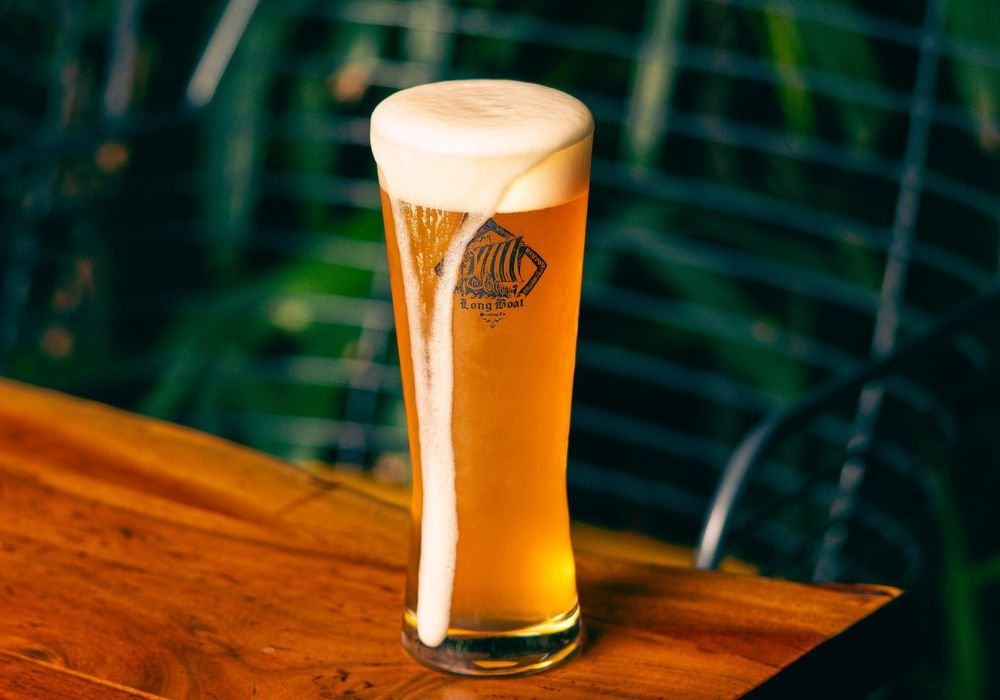Brewing with a Difference!

BEN JOHNSON
Owner, INOX Brewery Consulting
History, guidelines, and techniques for using nontraditional ingredients.
Brewing with fruits, herbs, and spices is nothing new. Historians will agree that the earliest fermented beverage was most likely mead.
NEW DIMENSIONS TO BREWING
In an industry growing as rapidly as the brewing industry, it seems brewers are willing to try any new flavor combination to set themselves apart. Among the most popular current trends in brewing is the use of fruits, spices, and herbs. In the U.S., the most recent craze is the fruit India Pale Ale (IPA). Breweries both big and small produce a variety of IPAs infused with citrus fruits such as orange, tangerine, and grapefruit or other tropical fruits such as mango and pineapple. Over the years, I’ve seen beers brewed with everything from plant based ingredients such as blue-green algae to less desirable ingredients like (yes…it’s true) goat brains. While I myself have not brewed with anything that extreme, I have made beers with some pretty exotic combinations. I made a gruit ale once (an ancient style brewed without hops) using all the ingredients you would find in Gin. It included juniper berries, coriander seed, bitter almond, and orris root. I brewed a double IPA using all the spices you would use in a Karnataka style curry. It included green chilies, ginger, mustard seed, fresh turmeric, and cumin. In place of onions and garlic, I used a hop variety called summit, which is known to produce those same flavors and aromas. It’s fair to say that over my career I have brewed with a large number of non-traditional ingredients. Much of my interest in this comes from my background as a chef. But despite how much I think I may know about brewing with exotic ingredients, there is always room for learning more.
For this article, I reached out to Tim Sciascia of Cellarmaker Brewing Company in San Francisco, California, and Brian Strumke of Stillwater Artisanal in Brooklyn, New York to help give us some insight on their approaches to creating and brewing fruit and spice beers. But first, a little history.

BRIAN STRUMKE
Stillwater Artisanal
HISTORY OF EXOTIC BREWING
Brewing with fruits, herbs, and spices is nothing new. Historians will agree that the earliest fermented beverage was most likely mead. These early honey wines were often flavored with herbs as a way to mask undesirable flavors and to make the beverage more enjoyable in an era where nothing was known of fermentation science. With the advent of malted grains, the early “brewers” began to produce beer. With hops not yet being discovered, these chemists turned to the same time-tested herbs to produce the earliest of beers. These beers, known as gruit ales, were often brewed with sage, thyme, oregano, myrtle, mint, and other locally grown herbs. It was not until later, when the global spice trade began to grow, that spices became an economical option. Ingredients such as coriander seed, black peppercorn, and grains of paradise became common brewing spices. Once hops were discovered, the brewing of gruit ales was largely abandoned for the more traditional type of ales and lagers of today. However, some regions have held on to their brewing past. In Belgium, fruit and spice beers continue to thrive. The Belgian style wit bier is one example, being traditionally brewed with coriander seed and dried curacao orange peel. Another traditional Belgian ale is Lambic, the famously tart and spontaneously fermented treasure of fruit beers produced in the major fruit growing region of Belgium. While the large amount of wild yeast present in the fruit orchards provide the tart aspect to this beer, it is the actual fruits that provide sweetness and balance. Traditional Lambic varieties include Kriek, brewed with cherries, Framboise, brewed with raspberries, and Peche, brewed with peaches. I have also tried versions made with everything from pears to bananas. In Germany, there is a style called Gose, from the town of Leipzig. It is a light, tart, refreshing beer, brewed with malted barley, wheat, salt, coriander seed, and fermented with the bacteria lactobacillus. This beer was largely abandoned by World War II, and it was only with the help of local beer producers, who kept this traditional style alive, that it is popular today. In fact, Gose has become so popular that hundreds of U.S. breweries are producing it today.
With such a long history of these fruit, herb, and spice beers being produced, you would think there would be handfuls of books and guides on how to use them, but there is not. Once the industrial revolution commenced, brewing techniques shifted to making mass produced ales and lagers. More was written about the chemistry and biology of producing beer then the long-lost traditions. Luckily for us, the current boom in the craft beer industry has opened the doors for brewing beers from the past and even allows us to take more innovative approaches. Our customers at our breweries are more willing to branch out from the norm! They are excited by variety and almost demand experimentation. While this is very exciting, as professionals, we cannot throw caution to the wind and brew without some sort of guidelines. Our goal is to always produce a beer that makes our customers happy, and more importantly for our bottom line, sell. Hopefully, this article will give you a better idea of how to do that.
RESEARCHING WIT BIER AND SPICES
In 2002, I began working for Midnight Sun Brewing Company in Anchorage, Alaska. The head brewer at the time, Gabe Fletcher, had a keen interest in Belgian style beers and his favorite style was wit bier. Initially, the wit bier we brewed was made in a very traditional style, with dried curacao (bitter) orange peel and coriander seed. While this beer was quite delicious and tasted very much like our favorite wit bier, Hoegaarden, we kept asking ourselves, “Can we do something different?” Over the course of the next several years we changed the spicing, always using bitter orange and coriander but sometimes adding black peppercorn, sometimes grains of paradise. When our regular supplier of North American produced coriander seed ran out, we went to an Indian market and discovered Indian coriander seed. This discovery alone opened our eyes to a whole new flavor profile. Sometimes we would grind the spices, other times we would lightly crack them. We varied the amounts of spices and varied the amount of time we would leave them in the boil, as long as 15 minutes or as short as 1 minute.
Then we began to change the orange. We tried dried sweet orange peel. We tried a combination of both sweet and bitter. We started using fresh peels of orange, tangerine and grapefruit (one of my favorites). We would use them individually or combine two or three. Each time the beer turned out different, we would document our results. While few occasions we loved it, other times not so much. Over the course of 5 years and at least 15 different iterations, we finally found the formula we were looking for. We enjoyed a beer brewed with Indian coriander at approximately 14g per hl and fresh orange peel at 28g per hl. When I went to recreate this beer at the Barking Deer, I learned that the type of oranges I typically worked with were only available at the import store. Needing them quickly and with no time to spare, I turned to mosambi and found a whole new flavor profile I had never known. What I learned is that without all this experimentation, I would never have gained a true sense of what these ingredients can do. I also learned there is no right or wrong when it comes to using these ingredients. Personal preference comes highly into play.
Brian Strumke, proprietor of Still water Artisanal, has some simple thoughts specific to herbs and spices. “Treat spices like tea, they are for accents and concentrated aroma.” His favorite spices are hibiscus and sage. I also asked him if he has had any eye-opening results, on which he offered one, “A little saffron goes a long way!”
MY MANTRA FRUIT, FRUIT AND FRUIT
Tim Sciascia, proprietor and Head Brewer for Cellarmaker Brewing, has extensive experience brewing with a variety of fruits and even vegetables. Being located in the heart of California’s rich agricultural region certainly doesn’t hurt. When I asked him about his approach to using these ingredients, he said, “I like to brew with the fruit I like to eat, or maybe a combo that reminds me of a mixed drink I enjoy. Nectarines are coming into season right now in California, so I can’t wait to bring in a box of those.” I take the same approach. When brewing with these ingredients, you need to think about the flavor profile like a chef would. A great starting point is to ask yourself, “What do I enjoy?” Strumke, who produces a number of beers with fruit, herbs, and spices, offers some additional advice. “I sure like to balance the fruit flavors with the malts and hops. I sometimes use lactose (milk sugar) to add back some of the sweetness lost during the fermentation process.” This is important to remember, as sugar in the fruit will ferment out if added during secondary fermentation, creating a beer that is drier on the palate.
When it comes to styles, Sciascia says, “Anything light and quenching works best with fruit. Cellarmaker has a beer called SoMa Vice (a Berliner Weiss style beer), named after the neighborhood we are located in. This beer has seen so many different treatments, but my favorite so far was watermelon, cucumber, and lemon zest. The beer was a perfect hot summer cooler! I also enjoy saison and sour beers, but pilsner, pale and IPA’s work very well too. That’s not to say dark beer doesn’t work well. We did a blend with the Rare Barrel (a Berkley, California based brewery) of their dark blackberry sour and a very robust porter of ours that turned out exquisitely.” Once again, I can echo Sciascia’s words. While we tend to think of fruit beers as being light and refreshing, dark beers such as porters and stouts can benefit from the use of dark fruits such as plums, figs, or even mulberries. One important factor is to consider the season and pick the freshest ingredients that are local to you. Common Indian fruits such as pomegranate, mango, jamun, guava, and dates can all be used with great success.
When it comes to incorporating these flavors into your beer, brewers use many different approaches. “I’ve used mostly whole fruit and fresh zest, but aseptic puree works very well too.” Sciascia says “Usually we cut up the fruit and puree it with an immersion blender or in a food processor.” Strumke, who produces on a much larger scale, says “I use mostly puree due to production size.” As for how and when to use purees, Sciascia says “For short term beers like IPA,
I add the puree during fermentation so the yeast can ferment the added sugar. I believe this preserves the aromatics of the fruit better than putting it in the kettle. Of course, you have to wonder about contamination. We don’t pitch this yeast [into other batches] and the beer is gone in a matter of weeks, not months, so [bacteria] has ever shown its head.”
ASEPTIC PUREE IS A GREAT OPTION
As Sciascia mentioned, if you are concerned about bacteria, or brewing on a very large scale like Strumke, aseptic puree is a great option. Amoretti, a flavoring company based out of southern California, is a leading provider of fruit purees, compounds, and extracts. All of their brewery products are produced with natural fruits, no artificial flavorings or preservatives, and are shelf stable. I recently spoke with Dylan Guerineau, Brewer Consultant for Amoretti, about their product line and usage. “Amoretti has been working with several of the BA (Brewers Association) top ten breweries.” Their most popular products are in their Artisan Line. Available in a wide range of flavors, it contains the source fruit in its entirety and contributes flavor profile and aroma with an emphasis on tartness and acidity. It is typically used at a rate of .4-.8 kg per hl, and can be dissolved with hot water before dosing in your batch. “The majority of brewers are using it post fermentation, yet there are plenty of brewers adding them during fermentation as well, so they can deal with the fermentable sugars,” Guerineau says. Amoretti also offers a product called Craft Puree that I have personally worked with and find intriguing. This product is in liquid form and while most add it to an entire batch of beer, it can also be added at the bar to infuse beers when ordered. This means you could offer your wheat beer as you brew it, or allow the customer to add, for example, a mango or blood orange flavor. I see this as a very easy way to give your guests more choices and make the beer ordering process a little more interactive. Guerineau also informed me that Amoretti does have experience shipping to India and that their products are available in multiple sizes.
ENJOY A FEW PINTS OF YOUR OWN RECIPE
While brewing with fruits, herbs and spices may seem challenging at times, using some of these techniques and guidelines can help you become a master. The important thing to remember is to not be afraid to experiment and to approach these beers with both a culinary and scientific mind. By taking the time to document your process in detail, you will begin to learn how subtle changes can make a great effect, and learn how to tailor the flavors in your beer to exactly what you and your customers enjoy. And always remember, slow down, have fun, and enjoy a few pints of your own along the way!

TIM SCIASCIA
Cellarmaker Brewing Company



